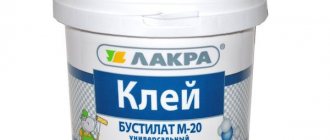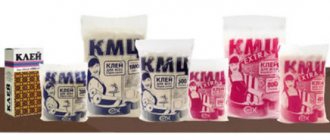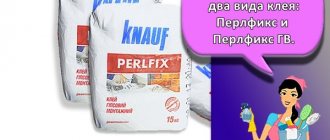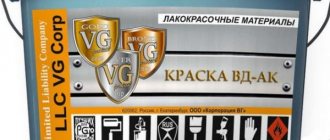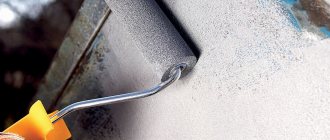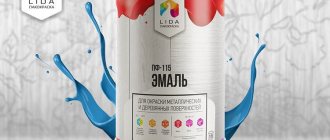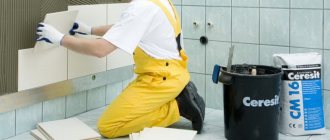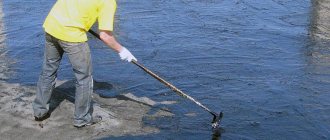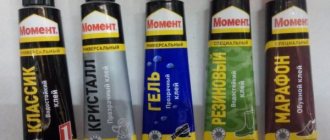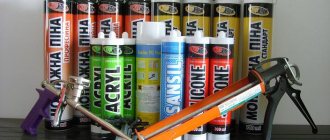Technical characteristics - table
| Characteristic | Brand/Value | |||||||||||
| Plus | 2000 | Hitech | Granite | Belfix | Fix | Pool | Warm glue | Horizon | Rapido | U 100 | Maxiflex | Super Plus |
| t of operation, °C | -50…+70 | -50…+50 | -50…+50 | -50…+50 | -50…+50 | -50…+70 | -50…+70 | -50…+70 | -50…+100 | -40…+80 | ||
| Dilution proportions, bulk mixture/liquid | 4,5-5,5/1 | |||||||||||
| Filler size, cm | Up to 0.1 | |||||||||||
| Recommended layer thickness, cm | 0,3-1,5 | 0.2-1 (1.5). 1 – for interior work, 1.5 – for exterior work. | 0,3-1,5 | 0,3-1 | 0,3-1,5 | 0,3-0,6 | 0,2-1,5 | 0,2-1 | 1 | 0,2-2,5 | ||
| Glue consumption per 1 m2, kg | 3,5-4,5 | 3,5 | 3,5-5 | 3,1 | 3,5-4,5 | Up to 3 with minimal layer | 1,45-1,55 | 1,25 | ||||
| Solution lifetime, min | 180 | 300 | 180 | 30 | 40 | 180 | ||||||
| Time for tile laying after applying the mixture, min | 20 | 10 | 15 | 25 | 15 | 10 | 20 | 10 | 20 | |||
| Time to correct the tile position, min | 10 | 15 | 10 | 15 | 10 | 60 | 20 | |||||
| How long does it take to dry before walking, hours? | 24 | 3 | 3 | 24 | ||||||||
| Adhesion to base, MPa | 1,25 | 1 | 0.5 (internal lining) and 0.75 (external) | 1 | 1,5 | 1 | 0,5 | 1 | 1,8 | 1,3 | ||
| Compressive strength, kg/cm. sq. | 150 | 75 | ||||||||||
| Weight that the layer can hold, c/m. sq. | 1 | 0,8 | 40 | 50 | 1 | 80 | 0,3 | 60 | ||||
| Frost resistance, cycle | >35 | >75 | >35 | >75 | 100 | |||||||
| Moisture absorption,% | 5 | |||||||||||
| Vapor permeability, mg/m*h*Pa | 0,1 | |||||||||||
| Package | Red bags of 5 and 25 kg | Black bags of 5 and 25 kg | Yellow bags of 5 and 25 kg | Blue and white bags 25 kg | Gray bags of 25 kg | White-yellow bags of 5, 25 kg | Checkered bags, 25 kg | Blue bags of 25 kg | Bags, 20 kg |
Consumption rates for tile adhesive by brand
We have already said that the brand of glue affects its consumption during facing work. The manufacturer provides this information, but warns that this figure is approximate, so you should not rely solely on it.
Consumption rate
Let's look at the most popular construction brands that produce these products. To begin with, here are the general figures for a specific brand:
Brand Eunice - from 1 to 1.16 kg per 1 mm layer.
Eunice
Ceresit brand - from 1.4 to 1.6 kg per 1 mm layer. If the layer is from 2 to 8 mm, then the consumption will be from 1.5 to 6 kg.
Ceresit
Litokol brand - from 1.3 to 1.5 kg per 1 mm layer. With a layer from 2 to 8 mm, glue consumption will be from 2.5 to 6 kg.
Litokol
Hercules brand – 1.5 kg per 1 mm layer.
Hercules
Mapei brand - from 1.2 to 1.6 kg per 1 mm layer. With a layer from 2 to 8 mm, the consumption will be from 2 to 8 kg.
Mapei
Let's take a closer look at glue consumption depending not only on the manufacturer, but also on the specific type of its product. First, let's look at the consumption per 1 m2 of Eunice tile adhesive.
Here are the types of glue and their consumption per square meter:
Adhesive Eunice XXI - consumption is almost 1.2 kg with a layer of 2 mm. If the tile is large, i.e. If you have to make the layer thicker, then the consumption increases. For example, with a 6 mm layer, 3.5 kg of adhesive composition per square meter will be required.
Eunice XXI
Unis 2000 - the consumption will be the same as in the previous version.
Unis 2000
Eunice Pool - consumption will be 1 kg per 1 square measure with a layer thickness of 1 mm. With a layer of 6 mm, 3.1 kg will be required.
Eunice Pool
Eunice Granite - the consumption of Eunice Granite tile adhesive per 1 m2 will be the same 1 and 3.1 kg with a layer thickness of 1 and 6 mm, respectively.
Eunice Granite
Eunice Plus - the consumption of Eunice Plus tile adhesive per 1 m2 will be 1.16 kg with a 1 mm layer, and 3.5 kg with a 6 mm layer.
Eunice Plus
Below are the different types of this glue that can be freely purchased in our country:
- Ceresite CM 9 – consumption is 1.6 kg per 1 mm layer. If the layer is 2 mm, then 4.2 kg will be required to cover one square meter.
- Ceresit CM 11 Plus - consumption is 1.5 kg per 1 mm layer.
- Ceresit CM 12 – consumption is 1.6 kg per 1 mm layer.
- Ceresit CM 117 – glue consumption is 1.4 kg per 1 mm layer.
- Ceresit CM 16 – glue consumption is 1.5 kg per 1 mm layer of glue applied.
Products from the Litokol brand will be characterized by the following consumption of adhesive composition:
- Litoflex K 81 – tile adhesive consumption per 1 sq.m is 1.35 kg (hereinafter we mean a layer of 1 mm of adhesive).
- Litoflex K 80 – adhesive consumption for ceramic tiles will be 1.35 kg.
- Litoflex K80 eco - glue consumption for porcelain tiles will be about 3 kg.
- Litokol X 11 – consumption is 1.35 kg.
- Litofloor K66 - consumption will be 1.5 kg.
- Litokol K 77 - the composition of this adhesive is perfect for laying tiles on the floor. The consumption will be about 1.3 kg with a layer of 1 mm. It is worth noting that the glue is applied not only to the surface, but also to the tile itself, so the final amount of glue spent will be higher.
- Litokol K 47 - the consumption of this glue will be the same as in the previous case.
- Litoacril Fix - it contains synthetic resins, and the glue consumption will be approximately 1.5 kg. This indicator is typical for tiles whose size does not exceed 15 by 15 cm, but for large tiles (45 by 45 cm) you will need at least 4 kilograms of glue.
Excellent mixtures are considered to be from Kreps. This is ideal value for money. There is a line for both external and internal work.
KrepsThus, “Basic” adhesive, which is used for laying tiles and ceramic tiles, will consume 4.5 kg per square meter with a thickness of applied adhesive equal to 3 mm.
Base
“Aqua.Stop” series – consumption will be from 5 to 8 kg per 1 mm layer. This composition is used for laying tiles in swimming pools, bathhouses, etc.
“Strong” adhesive is suitable for large tiles that have the appropriate weight. Glue consumption will be from 5 to 8 kg per 1 mm layer.
Instructions for use
Before use, read the instructions provided on the packaging by the manufacturer. This is especially true for beginners who do not have experience in carrying out facing work. Instructions for use:
- The old surface is removed using a drill or wide spatula. If the wall is painted, you can leave the paint and apply the tiles, first leveling the surface with putty.
- Differences in the base of the surface should not exceed 1 mm per 1 m. Especially deep cracks should be sealed with plaster and covered with soil mortar on top.
- If it is applied to a surface covered with paint, notches are made for every 5 cm of the wall, which increase the level of adhesion of the material to the wall.
- At the end, the surface is well dried and degreased.
Surface preparation
The optimal temperature for facing work is from plus 5 to plus 30 degrees, air humidity should not exceed 75%.
The most difficult thing is to properly prepare the surface. At the same time, it is the preparatory work that largely determines how smoothly the tiles will lie and the appearance of the room as a whole. The base should not only be level, but also strong (it should not fall or crack under the weight of tiles or natural stone), and dry.
The surface on which the glue will be applied should be free of oil stains, paint coatings and various types of contaminants.
Cracks and uneven areas of the wall are leveled using plaster. A thin layer of putty is applied on top to make the surface perfectly smooth. Additionally, cover with a primer mixture to ensure reliable adhesion to the glue.
For cladding surfaces in basements, rooms with high humidity, and swimming pools, apply two layers of primer, drying each one well. It may be necessary to install coating waterproofing.
Before tiling, the tile or base does not need to be additionally moistened with water.
After installation, excess glue is removed using a spatula. This must be done immediately, since different types of Eunice dry very quickly. Upon completion of the work, grout of a matching or transparent color is applied to it. Residues can also be removed with a spatula or damp sponge.
Mixing the solution
The adhesive solution is mixed in a bucket of water and stirred using a construction mixer.
It is important to comply with all proportions and dosage specified by the manufacturer on the packaging.
If you don't have a mixer, mix it by hand. The amount of glue should be no more than 1 kg, otherwise the mixture will not be homogeneous and it will not fit well. The prepared composition must be applied within 3 hours, otherwise it will begin to dry out and lose its basic properties.
The amount of water must be precise, otherwise the mixture will be too thin.
Applying glue
The application of Eunice glue takes place in several stages:
- First, prepare the surface, seal cracks and irregularities, and cover with a layer of primer. Some types of glue work well on uneven surfaces, but leveling will save some time. This is especially true for beginners.
- It is better to apply the diluted solution with a spatula to make it more convenient to distribute it over the surface. The thickness of the solution should not exceed 15 mm, otherwise it will begin to “sink” and will not adhere tightly. There is no need to fill the entire wall with glue; you need to apply the mixture to an area that can be covered in 15-20 minutes.
- Within 20 minutes after applying the adhesive, the position of the tiles can be adjusted. It should be clearly leveled.
- It should be applied not only to the wall, but also to the tiles.
LKMFLOT
Code: 100960303
Category:
Adhesives
Brand:
Unis
Packing:
5, 25
Packing:
1
Tile adhesive Unis Plus (Unis)
DESCRIPTION: Tile adhesive for laying ceramic, tile and mosaic tiles, natural stone slabs and porcelain stoneware.
APPLICATION: Used for laying ceramic, tiled and mosaic tiles, natural stone slabs and porcelain tiles measuring no more than 60x60 cm on floors and walls. Is the maximum weight of glued tiles no more than 100kg/m? surfaces. "UNIS PLUS" is recommended for use for external cladding of buildings above the basement, tiling work in interior spaces with normal and high humidity: for bathrooms, balconies and terraces, as well as for cladding surfaces of complex bases, such as old tile coverings, heated surfaces and etc.
TECHNICAL CHARACTERISTICS: Work temperature +5 to +30°C Amount of water per 25 kg of dry mixture 4.5-5.5 l Layer thickness 3-15 mm Consumption when using a spatula 6 * 6 mm 3.5-4.5 kg/m? Viability of the solution 180 minutes Time for laying tiles 20 minutes Time to adjust the position of the tiles 10 minutes Time before walking 24 hours Adhesion strength to the base 12.5 kg/cm? (1.25 MPa) Tile support weight 100 kg/m? Frost resistance at least 35 cycles Operating temperature from -50 to +70°C
PROPERTIES: UNIS PLUS tile adhesive reliably fixes tiles on difficult substrates due to its increased adhesion strength. High adhesive ability allows the tiles to be laid using the top-down method. "UNIS PLUS" is used on heated surfaces (up to +70°C), including in the "Warm Floor" system. The plasticity of the finished UNIS PLUS solution makes the adhesive easy to use. After gaining strength, UNIS PLUS retains its properties in direct contact with water and when exposed to negative temperatures. "Unis PLUS" is an environmentally friendly material, because does not emit substances hazardous to human health and the environment during work and operation.
RECOMMENDED SUBSTRATES: Used on non-deformable bases: concrete (including cellular concrete and slag concrete), cement (including cement plaster), brick, gypsum (gypsum plasterboard, gypsum board, GVL, etc.), as well as on asphalt
PERFORMANCE OF WORK: Work should be carried out in dry conditions, at an air temperature from +5 to +30 ° C and a relative air humidity of no more than 75%.
SURFACE PREPARATION: The base must be level, strong, dry, and have load-bearing capacity. Before applying the material, it is necessary to remove crumbling elements, paint coatings, oil and bitumen stains and other contaminants from the surface that prevent the adhesion of the material to the surface. The base must be aligned horizontally (vertically) with deviations of no more than 1 mm per 1 m of length. To level cracks, cavities and other small defects with a depth of more than 10 mm, it is recommended to use plasters of the “Silin”, “Teplon” or “Standard” series, depending on the type of surface or operating conditions. For cladding wet and basement areas, it is recommended to use GIDROPLAST coating waterproofing as a preparatory layer. To increase the adhesion strength, it is recommended to treat the surface with UNIS primer in one or two layers, unevenly and highly absorbent bases (gas silicate, foam concrete, etc.) in several layers. The selection of UNIS soil is carried out in accordance with the type of foundation. There is no need to wet the base or tiles with water before laying.
PREPARATION OF THE SOLUTION: For preparation, use only clean containers and tools. The dry mixture must be poured into a prepared container with clean water in a proportion of 0.18-0.22 liters per 1 kg of dry mixture and mixed until a homogeneous mass is obtained for 3-5 minutes. Let the solution sit for 3-5 minutes and mix again. Mixing is done manually or mechanized (with a professional mixer or drill with an attachment at low speed). Manual mixing is allowed when the mass of the mixture to be mixed is no more than 1 kg. The prepared portion of the solution must be consumed within 180 minutes.
Attention! When applied, adding any components, including excess water, to a dry mixture or mixed solution leads to a change in the properties of the material declared by the manufacturer.
APPLICATION OF THE MATERIAL: Apply the prepared adhesive solution 3-15 mm thick onto the prepared, primed base or work surface using a trowel or spatula and level it with a notched trowel. For large-format ceramic tiles, use a spatula with teeth of at least 8 mm. The weight of large-format tiles should not exceed the permissible limit. The tile is laid on the adhesive layer and pressed. The inner surface of the tile must adhere tightly to the adhesive solution. When applying adhesive to the base, the mortar mixture should be applied to an area that can be tiled within 20 minutes. Adjustment of the position and cleaning of the tile surface from excess adhesive must be carried out within 10 minutes after installation. Subsequent grouting of the seams of wall and floor tiles with colored grout "UNIS COLOR" can be carried out 24 hours after cladding. When tiling floors, walking is possible 24 hours after laying the tiles. Operation of the “Warm Floor” system is possible no earlier than 28 days from the date of application of the material.
RECOMMENDATIONS: In addition to the information provided on the packaging about how to use the material, when working with it, you should follow the instructions for conducting general construction work and safety precautions in construction. If you have any doubts about the possibility of using this material, you should contact the manufacturer for advice. The technical description cannot replace professional training when performing work.
PACKAGING AND STORAGE: The dry mixture is supplied in durable kraft bags. Guaranteed shelf life in undamaged original packaging in a dry place is 12 months from the date of manufacture.
COMPOSITION: Cement, mineral filler, chemical additives.
DISPOSAL: Empty packaging should be recycled or disposed of together with hardened residues as household waste. Glue is not recommended for use when lining swimming pools, stoves and fireplaces. Attention! Keep away from children. Use gloves while working. In case of contact with eyes, rinse them with water.
PACKING: 5 kg, 25 kg
Choice
Unis adhesive is available on the market in several formats, each of which is suitable for a specific type of repair, material, temperature and many other factors. It is always written in the name of the glue or on its packaging what this or that type is suitable for.
Unis Plus
The scope of application of glue is very wide. Eunice Plus is suitable for repair work inside and outside the building, securely fixing it to the base.
The safe composition and the absence of a sharp unpleasant odor allows the adhesive solution to be used for cladding medical and children's institutions and houses.
Basic indicators:
- Adhesion – 1.25 MPa.
- The maximum withstand load is 100 kg/m2.
Scope of application – internal and external cladding, complex bases.
Unis 2000
Allows you to cover floors and walls without prior leveling, and fills unevenness and cracks well.
Withstands ceramic tiles and porcelain stoneware up to 60x60 in size.
Unis 21
Typically used for interior wall and floor cladding with standard size ceramic tiles. It is characterized by increased moisture resistance and is used in the renovation of bathrooms and kitchens.
Able to withstand small-sized porcelain stoneware slabs (up to 30x30).
Porcelain tiles with Yunis 21 glue should only be laid on the floor so that they are firmly pressed and the adhesion is strong.
Unis hitech
The Hitech adhesive mixture is highly durable and does not dry as quickly as other types. Allows you to lay it from top to bottom, and not just the standard method - it provides reliable adhesion to surfaces of any type.
Unis granite
From the name of the glue it is clear that its main purpose is to cover walls and floors with heavy materials: natural stone, porcelain stoneware.
Provides tight adhesion and is suitable for laying tiles on floors, walls, plinths, facades.
Unis Belfix
Suitable for complex facing work, reliably holds natural stone, marble, granite, mosaic, porcelain stoneware. The main advantages are a high level of elasticity and frost resistance.
Often used for grouting joints, cladding the outside of a building, and decorating heated floors. The most expensive option presented.
For more information about frost-resistant glue, read the article - Frost-resistant glue for external use
Unis fix
Cheap glue that is rarely found in construction stores. In terms of strength characteristics, it is inferior to other types; it is usually used for cladding walls and floors with standard small tiles.
It repels moisture well and is suitable for cladding rooms with high humidity - kitchens, bathrooms.
Unis pool
Suitable for decoration, swimming pools, water tanks with ceramic tiles, mosaics, natural stone. Indoors can be used for cladding with high humidity, heated floors.
New tiles can be laid on old ones; they are also suitable for covering untreated surfaces. Fills cracks and uneven areas well.
Connecting to the network is an alternative method
We took this cable:
The heating conductor (3) and the conductors (1 and 2), through which current flows, cannot be short-circuited
- This is what the end looks like.
- Cleaned it up.
- Using this terminal block I connected it to the wire.
The opposite side must be insulated. It is prohibited to bridge the conductors. And we must ensure that they do not bridge in any environment. You can buy a special plug for this. They cost around 300 rubles apiece. But you can do everything yourself using improvised means, such as heat-shrink tubing and a heat gun.
- Thermal gun.
- Heat-shrink tubing.
- End of insulated cable.
The plug is made as follows. We put on the heat shrink tube. We warm it up with a hairdryer. Afterwards we fill the entire structure with a heat gun.
The same procedure can be done with the terminal block to which the cable power is connected. You can also wrap everything with electrical tape just in case. If operating conditions are harsh.
Advantages
- High strength index.
- Good adhesion characteristics to all types of substrates.
- The adhesive joint does not lose its properties when the temperature decreases or increases, but only frost-resistant glue has resistance to freezing, which can withstand even the conditions of the Far North.
- The composition is environmentally friendly, has no pungent odor, and no toxic fumes.
- At the same time, the cladding is glued and the base is leveled.
- The density of the composition prevents the tiles from sliding even from vertical or inclined bases.
- Economy. The consumption of tile adhesive is small, its value varies slightly depending on the type.
- Long shelf life of the finished solution. There is enough time to lay the tiles, adjust their position and securely fix them.
- Moisture resistance.
- Can be used when installing heated floors.
Features of Eunice glue
To begin with, let’s take a look at the characteristics of Eunice tile adhesive in relation to analogues of other brands. The fundamental characteristics of Unis Plus and other Unis tile adhesives include:
- High adhesion properties. Products from this manufacturer adhere firmly to a variety of types of cladding.
- Guaranteed resistance to tile peeling. Thanks to its carefully thought-out composition, the adhesive ensures a strong connection between the tiles and wall or floor surfaces.
- Compatible with the “Warm Floor” heating system. Unlike low-quality adhesive mixtures, Eunice tile adhesive is suitable for finishing floor surfaces with electric and water heating mechanisms.
- Possibility of laying tiles on tiles. It often becomes a key factor in choosing an adhesive mixture for those who expect to perform quick repairs on a small budget.
- Laying tiles starting from the top of the wall. If it is more convenient, then it is not necessary to cover the wall surface from its lower part.
- Use in institutions with high sanitary and hygienic requirements. Unis products are absolutely harmless, therefore they are applicable in clinics, medical, preventive and health institutions for both adults and children.
Some tips
- Do not spread a lot of glue at once. If you do not have sufficient experience or the tiles are small, knead no more than 5–7 kg at a time. dry mixture;
- When mixing glue by hand, do not dilute more than 2 kg, a larger volume will not allow you to mix all the components evenly;
- To increase the flexibility of the interlocking seam, use additional Eunice elasticizers;
- When covering horizontal surfaces, start from the second row from the bottom;
- When the dry mixture comes into contact with water, an alkaline reaction occurs. Do not allow the solution to come into contact with exposed skin.
We recommend watching the video review:
Specifications
The physical and mechanical characteristics of Unis Plus tile adhesive look like this:
- the life cycle of the working solution is 3 hours;
- installation time should not exceed 20 minutes from the moment the solution is applied to the work surface;
- the time for adjusting the laid fragment should not exceed 10 minutes;
- layer thickness range depending on the length of the spatula teeth – 3–15 mm;
- temperature conditions during cladding – from +5 to +30 degrees;
- compressive strength is 7.5 MPa;
- air humidity in the room at the time of operation is no more than 75%;
- the amount of water per 25 kg bag is 5–5.5 liters;
- approximate consumption per 1 m² with the length of the spatula teeth – 3.5–4.5 kg/m²;
- frost resistance is at least 35 cycles;
- raw material consumption for a thickness of 1 mm is 1.25–1.30 kg/m²;
- the retained weight of the tile together with glue is 100 kg/m²;
- The drying time for the solution under the tile is 24 hours;
- the operating temperature of the finished coating varies from -35 to +70 degrees;
- the level of adhesion with the working base reaches 1.25 MPa.
Instructions for use
For interior work, it is recommended to dry the room thoroughly. You can use a heat gun for this. The optimal temperature for styling is about 20˚C.
It is better to carry out external work in the warm season, at a temperature not lower than +5˚С and humidity not higher than 70%.
Surface preparation
The reliability of installation and the service life of the finish depend on the quality of preparation of the base.
- Before installation, dismantle the old coating as much as possible. If it is impossible to completely get rid of the elements, level the plane with the mounting mixture. For greater strength, use metal mesh as a reinforcing component.
- After leveling, dry the surface for 24 hours.
- When working in rooms that are constantly in contact with water, apply a layer of waterproofing material and again leave to dry for at least a day;
- Next, prime the surface, dry it and mark it.
How to dilute the solution
It is recommended to dilute the solution in a tall container or bucket. Do not use flat trays; the solution dries out faster in them.
Pour the dry mixture into a container and add water according to the instructions on the package.
- Use a construction mixer or a drill with a screw attachment to stir the solution for 3–7 minutes.
- Cover with a lid and leave the solution to ripen for 7–10 minutes.
- Stir again, adding a little more water if necessary.
Applying glue
After dilution, the mixture is immediately applied to the prepared surface.
- The composition is first leveled over the entire plane of contact with the finishing elements.
- Then a ribbed structure is created with a notched trowel. The depth of the grooves is calculated based on the size of the tile.
- When laying on a vertical plane, wait 7–10 minutes after applying the mixture. Then the elements are laid sequentially at a distance of 1–5 mm. from each other. To ensure the same distance, use cross-shaped dividers;
- After placing the tile, tap the tile with a rubber hammer to press it evenly into the mortar. The contact area between the installation composition and elements must be at least 60%.
- Remove excess mixture immediately with a rubber spatula and a wet cloth. The optimal installation temperature is 18–22˚С, humidity 60–70%. After finishing work, allow the solution to dry completely for at least a day.
Preparation of the adhesive composition
Tile adhesive
Eunice plus tile adhesive is diluted with water at the rate of 250 ml of water per kilogram of dry mixture. More precise proportions are indicated in the instructions included with all Eunice products.
It is recommended to stir the composition several times, every 3-5 minutes, which is necessary for complete connection with water.
Mixing can be done using a construction mixer or using a drill with an additional attachment. As a last resort, you can simply mix the mixture thoroughly with your hands.
The adhesive composition must be prepared based on the expected amount of work, taking into account that the prepared composition retains the properties necessary for high-quality tile laying for 3 hours.
Advantages and disadvantages
The main advantages of the Eunice adhesive mixture:
- High level of elasticity, suitable for fixing to a moving base (for example, wood). Fills in all the unevenness.
- Good adhesion, provides strong and reliable adhesion to the base. Allows you to lay it from bottom to top and prevents it from slipping.
- Wide range of applications. Suitable for external and internal work.
- High heat resistance allows the adhesive mixture to be used for heated floor coverings. It does not heat up due to high temperatures, and the fixation does not become worse.
- Dries quickly.
However, it has a number of disadvantages. These include the speed of drying - it will have to be diluted in small portions, which takes a lot of time. If this is not done, it will lose most of its properties, and the master will waste his money.
You might also be interested in watching - Ceresit tile adhesive: varieties and features
Pros and cons of Unis tile adhesive
As you can see, Unis tile adhesive has many advantages. They should also include the fact that it is quite simple and convenient to work with such a composition. The manufacturer provides detailed instructions for using its products, so even the least experienced tiler can easily navigate it.
The disadvantages include not the lowest cost of glue. It mainly depends on the specific subtype of the composition, but in general you can find a more budget-friendly option on the market. However, the amount on the price tag fully justifies the decent quality and excellent performance indicators of the material.
Peculiarities
Unis tile adhesive contains cement, chemical components, and mineral additives. It shows all its best sides when temperatures vary from -5 to +30. It is convenient to work with a properly prepared solution; it retains its best properties for 3-5 hours. After application it remains flexible and waterproof.
After installation using this glue, adjustments can be made within 10-20 minutes. Complete hardening of the composition occurs within 24 hours, after which the base can be loaded. Adhesive from the Yunis company has optimal characteristics for use in a wide variety of conditions
It is only important to choose the appropriate adhesive for the purpose.
Properties
Why can this adhesive be used effectively to create complex surfaces? The point is that it provides improved adhesive strength. Thanks to this, safe installation using the top-down method is even possible.
This composition can also be used on surfaces that heat up, including “warm floor” technology. The heating temperature can be up to seventy degrees.
The plastic properties of Unis tile adhesive make it comfortable to use at work. When the composition gains strength, its properties are fully preserved even at low temperatures or interaction with water.
This positive picture of characteristics is complemented by the fact that Eunice glue is absolutely harmless. When working with it, as well as during operation, the material does not emit harmful substances.
Flow calculator
Typically, all work with glue is carried out using a notched trowel, because products of the Unis brand do not require continuous application. The teeth leave empty grooves, therefore, glue consumption is reduced. To prevent it from rising, it is better to first treat uneven bases with plaster.
The working layer should not exceed 15 mm, its minimum thickness is 2-3 mm. Typically, if you have a spatula with teeth 6.2 * 6.2 cm in size, the consumption varies from 3.5 to 4.8 kg with the greatest thickness of the seam. A spatula, whose teeth measure 3.1*3.1 cm, “takes up” less glue – up to 3.5 kg. Do not violate the proportions - dilute the glue with water strictly according to the instructions for use. Otherwise, consumption may change upward. Preparing too large portions of the solution also negatively affects efficiency: if you do not have time to use up the glue, it will deteriorate.
How to calculate the consumption of Eunice glue?
Many consumers are concerned about the question of how to determine the consumption of Eunice glue, so as not to make a mistake with its quantity: purchase not enough or, conversely, too many packages. To avoid such a nuisance, you will need to accurately calculate the total coverage area and navigate the thickness of the applied adhesive layer.
In addition, you can simply carefully study the instructions from the manufacturer, which are printed on each package of products. A detailed description will make it possible to correctly calculate the volume of glue needed.
There are also calculators on the Internet that allow you to quickly and effortlessly calculate the required volume of adhesive. To do this, just enter a specific coverage area into the system. Then indicate the type of product used, and the online calculator will give you the estimated cost of glue in kilograms.
Instructions for use
Standard requirements when performing facing work are temperature +5 - +30 degrees, air humidity up to 75%.
Preparing the surface
Before you begin the main work, you need to prepare the foundation:
- Completely get rid of the old finishing - tiles, plaster, screed.
- Make the base perfectly level. The maximum acceptable height difference is 1mm per 1m. To seal cracks larger than 10 mm, we use Eunice “Silin”, Eunice “Teplon” or Eunice “Standard” plaster.
- If the installation will be carried out on top of old tiles, then for better adhesion, notches should be made on it at intervals of 5 cm, adhering to a checkerboard pattern.
- The surface must be completely dry and free of grease.
- If the room is damp, then coating waterproofing is done over the entire surface using Eunice Hydroplast.
- To improve adhesion, treatment with Eunice primer is needed, which is done once, maximum twice. You need to walk with special care on surfaces made of gas silicate and foam concrete, because... they are highly absorbent.
- There is no need to wet the tiles or surfaces.
If the base is not leveled, the layer of applied mortar will not be uniform, which means shrinkage will occur differently. This threatens peeling or cracks on the surface of the tile.
Mix the solution
- The solution is mixed with a clean tool in a clean container.
- The dry mixture is gradually added to the water, adhering to the proportions specified in the instructions. The solution is mixed until a homogeneous consistency is obtained. This usually takes 3 to 5 minutes.
- After this, the solution should be left alone for about 5 minutes to ripen, and then mixed again.
- Mix the solution manually or with a mixer, turning it on at low speed. It is recommended to knead no more than 1 kg of mixture by hand.
- The sales time for the finished solution is 3 hours, if you use the HiTech mixture, then 5 hours. If the mixture thickens during the working period, it can simply be stirred without adding water.
- Ideally, maintain all proportions so as not to degrade the quality of the finished mixture.
Apply glue
The finished surface is covered with a layer of glue, 3 to 15 mm thick, after which it is leveled along the entire length with a comb.
If large tiles or porcelain tiles are used for installation, then the length of the comb teeth is from 8 cm. It is also necessary to monitor the weight of the tiles, which should not exceed the maximum permissible.
The tile must be pressed tightly against the adhesive layer in order to obtain its uniform distribution and avoid the formation of voids. For better installation, the tiles are pressed in by moving back and forth or tapped with a mallet. After the tile has “settled” into place, the adhesive layer should not exceed the maximum value.
The glue needs to cover exactly as much area as can be covered during the time the solution is active - this is usually from 10 to 20 minutes. After this period, adhesion will become significantly worse.
Usually the mixture is applied only to the base, but if external work is being done or marble slabs, large tiles or relief tiles are being laid, then the glue must be applied to the tile itself.
If you need to adjust the tiles, this can be done safely within 10-20 minutes after installation. Check all planes with a level. The uniformity of the seams is obtained using plastic crosses.
After a day, you can move on the tiles and grout using UNIS COLOR colored grout mixtures.
Heated floors can be started no earlier than 28 days after facing work.
Variety Eunice 2000
The Yunis 2000 product line is quite rich. The manufacturer offers the following types:
- "Plus". Considered universal. Perfect for indoor and outdoor use. And also gained a lot of positive feedback when covering curved surfaces. The prepared solution should be used within three hours. The manufacturer does not recommend using the presented tile adhesive in places where high temperatures prevail - fireplaces, stoves. In addition, it should not be used on surfaces that are constantly in contact with liquid, such as swimming pools.
- "Hi Tech". The latest technologies were used in the development. Ready for use within five hours after dilution. Often used when cladding ceilings.
- "Granite". Ideal for natural stone, granite. The main advantage is increased strength, which allows the composition to be used for facing surfaces that are subject to severe loads during operation.
- "Pool". An excellent option for rooms with high humidity.
- "Belfast". Suitable for complex designs, for example, for surfaces with unusual relief.
Characteristic
This glue is universal and can be used for various work both indoors and outdoors. It has a cement base with mineral fillers and other chemical reagents, due to which this mixture has high-quality technical characteristics:
- High coefficient of adhesion.
- Moisture resistance, which is especially important for cladding rooms with high humidity or swimming pools.
- Resistant to temperature changes. The properties of the glue do not change regardless of weather conditions. It can withstand temperatures from -50 to +70 degrees.
- The mixture has an environmentally friendly composition and therefore does not cause allergies.
- The mortar, and with it the tiles, will not begin to slide off the wall, because the glue is flexible. It is firmly fixed to the surface.
The mixture is easy to prepare and apply, while the glue consumption is quite economical and is approximately three to four kilograms per 1 m2 (here it all depends on the size of the tiles). The mixture is usually sold in bags weighing 25 kg, which simplifies the task of calculating the amount of glue for certain finishing works. A 25 kg package is enough for an area of 8 square meters. The glue dries within twenty-four hours.
Instructions for use
The glue is diluted according to the instructions indicated by the manufacturer on the back of the package. It must be diluted before the actual start of the work process. If the proportions specified by the seller are observed, the master produces a paste-like mass of uniform consistency. After the initial stirring, the solution is left and stirred again after 5–7 minutes. Then they begin the main process. The glue is scooped up with a trowel and distributed over a small area of the wall (about 2-4 small tiles). Afterwards, a notched spatula is passed over it, removing excess mass. Next, take the die and spread glue on its back surface. The excess is again removed with a notched spatula. But now in a direction perpendicular to that on the working surface. This will avoid air pockets and will promote stronger adhesion of the composition to the tiles and base.
Then the die is pressed to the base and slightly moved back and forth, after which it is installed in its place. Shifting will also allow you to get rid of excess voids. After installing the first element in place, take the second and install it next to the first in exactly the same way. However, here it is already necessary to maintain equal voids between the elements, since different distances between the parts will make the finished appearance of the cladding sloppy. The size of the seams depends on the size of the element. Usually, the larger it is, the larger the gaps can be, however, craftsmen do not recommend making too wide seams in the finishing, since the seams themselves are a sore spot in the finished tile covering. Distances that are too narrow will result in imperfect geometry.
In order not to suffer with every distance and crosshairs, it is better to use special crosses. This will allow you to control the distance between the tiles and see when it is insufficient (the crosses should not fall out, they should be pressed well with the tiles). Upon completion of work, you must immediately wash the equipment. It is necessary to remove excess glue during the work process. You cannot do this when the composition has hardened, and even by scraping it off the tile. This will leave scratches on the surface.
After the mortar under the tiles has dried, remove all the crosses that were used during installation. Then take the grout mixture, dilute it as indicated in the instructions (usually add water too) to the consistency of sour cream. After it, all the voids between the finishing elements are filled, and then the entire surface is wiped with a dry sponge, removing excess mixture. This is where the finishing ends, however, some craftsmen, after the grout has dried, treat the finished coating with a special spray in the form of an aerosol.
Surface preparation
As in many other cases, in this case the base must be sufficiently dry, strong, and also level. Even before working with the material, defects and loose elements should be removed. All these defects contribute to the deterioration of surface adhesion properties.
The preparation must be carried out in relation to the vertical or horizontal. An error of one millimeter per meter of surface length is allowed.
If there is a defect larger than 1 cm on the wall, floor or ceiling, it is important to use special plaster. Then prime the surface in several layers.
Another important advantage of Unis glue is that neither the tile nor the surface should be wetted with water. Clutch performance does not suffer from this.
Choosing glue
To choose the right dry mixture from Eunice, carefully read the comparison table, which presents the entire range of products of this company:
- Yunis XXI tile adhesive has two release options - exclusively for internal work (place of production in Moscow), and internal/external work (place of production in Chelyabinsk and Ulyanovsk).
- Prices are as of 2015.
Eunice Plus
The main distinguishing feature of Eunice Plus glue is its versatility. You can lay tiles, mosaics, stones, and porcelain tiles on it. Another significant advantage of this material is strength. Adhesion of ceramic tiles and porcelain stoneware is 1.25 MPa, can withstand a maximum weight of 100 kg/m2. You can carry out both internal and external work, except for cladding the basement floors. It is used to make complex bases under heated floors and even on top of old tiles. It is certified as a material safe for health, therefore it is approved for use in gardens, schools and other institutions. Placed on a solid base - non-deformable concrete, cement, brick, plaster.
Unis 2000
Using Unis 2000 tile adhesive, they glue wall and floor ceramic tiles and porcelain tiles measuring 60*60, and perform interior and exterior work. Can be used as a leveling layer that perfectly fills unevenness on the base during the laying process. Suitable for durable concrete, gypsum, cement and brick substrates.
In terms of safety, it is completely analogous to the previous composition.
Eunice XXI
Yunis XXI tile adhesive is used to perform standard interior and exterior work - tiling floors and walls with regular tiles. It is used in rooms with high humidity and the likelihood of freezing in winter. Suitable for laying small porcelain tiles - within 30cm and exclusively on floors.
Before purchasing, pay attention to the place of production - the Moscow plant produces the mixture exclusively for indoor use
- Maximum loads in subzero temperatures are possible only after 28 days, and then only if during this period there was no systematic contact with water.
- UNIS XXI tile adhesive has two release options - exclusively for internal work (place of production in Moscow), and internal/external work (place of production in Chelyabinsk and Ulyanovsk). If internal work is carried out, then the layer should be a maximum of 10mm, if external - 15mm. The adhesion level is 0.5 and 0.7 MPa, respectively.
Eunice HiTech
The main purpose of the HiTech mixture is to work with complex bases: ceilings, walls, floors. Laying can be done not only from the floor, but also from the ceiling. It has a fairly long solution life. Can be used in children's and medical institutions. One bag weighing 25 kg is used for 7 m2 of cladding.
Eunice Granite
Using Eunice Granite tile adhesive, large and heavy floor slabs made of natural stone and porcelain stoneware are laid. Floors, walls, facades, plinths are covered. Can be laid on top of old tiles and underfloor heating systems. The glue has a fairly thick consistency, so it does not slip during the hardening period. Can be used in children's institutions.
Yunis Granite is distinguished by increased adhesion strength - 1.5 MPa. If we compare with the same indicator from other manufacturers, we see that Hercules Elastic GM-195 has exactly the same, and Ceresit SM 17 has only 1.3 MPa.
Eunice Belfix
The Eunice Belfix mixture is available in a non-standard white color, because it is used for laying marble, glass mosaics, and natural stone, for which the usual cement mixture is strictly contraindicated. It is characterized by increased elasticity and frost resistance. Place of application: walls, floors, liquid tanks, rooms with high humidity, outdoors, heated floors. Can be used as grout. The cost is higher than other types of adhesives - for a 25 kg bag you need to pay 418 rubles.
Unis Fix
Relatively inexpensive, but not the most reliable glue. It has a fairly high consumption and does not appear on sale often. It is used for tiling work on walls and floors in the bathroom, kitchen, terrace, and balcony. Works with regular tiles.
Eunice Pool
Places where Eunice Pool glue is used are wet rooms, water tanks. Laying materials: mosaic, ceramic and stone tiles. You can perform external and internal work, complex foundations, lay on top of old cladding and heated floors.
Application area
Laying tiles
Universal adhesive, class C, used for exterior and interior use. Used for laying facing material on a hard, non-deformable surface (cement, brick, gypsum and cement plasters).
Recommended for use when laying ceramic, tiles and tiles made of natural and artificial stone on standard and complex bases ("Warm Floor" system).
The characteristics of Eunice Plus allow you to lay tiles in rooms with normal and high humidity (kitchen, bathroom, balcony). The frost resistance of the adhesive guarantees a durable and high-quality finish when laying tiles for outdoor work. An exception is the finishing of the basement parts of the building.

